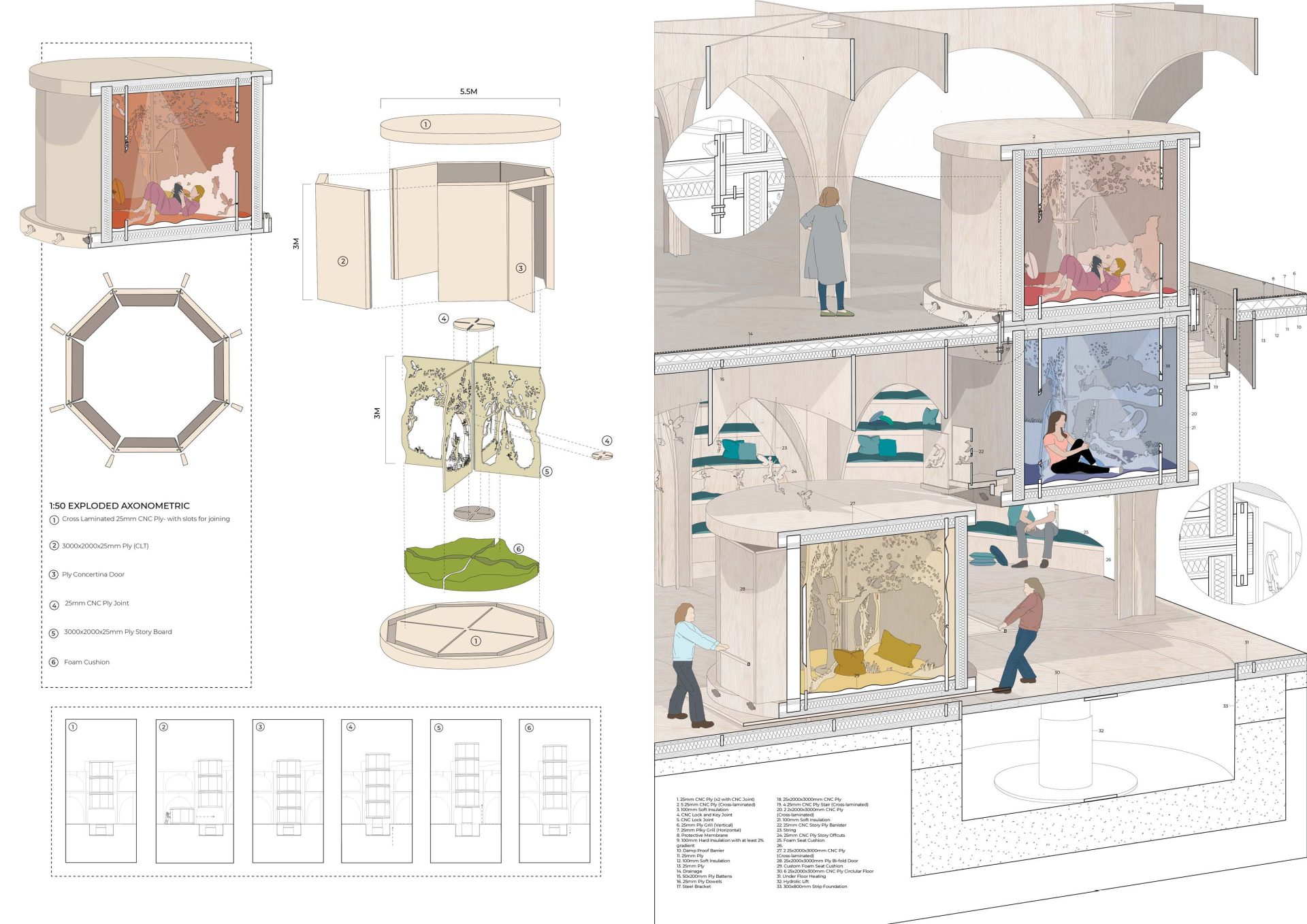The way we conceive and create places is evolving and becoming more complex, and storytelling is becoming an important design tool in the realisation and creation of meaningful spaces. While storytelling, in a traditional sense, can be described as the sharing of words and actions to reveal elements and images of a story, storytelling in design is based on the construction of a physical narrative by organising spatial, socio-economic and environmental relationships. Architecture is an ever-present form of visual storytelling; the built environment has the ability to capture the history of a place and tell that story through space.
Every place has a story to tell, and for many, our fondest memories are tied to a specific location. We understand and connect with places through stories, due to the strong emotional bonds that we form with them, experiencing not only the physical character of a space, but what it feels like to be there. In acknowledging all that makes a place – its past, purpose, people, context- we can create spaces that transcend time and make for more engaging, personal and compelling user experiences. Creating an authentic narrative can build the identity of the place, given its consideration of the human and social context because ultimately people value places that mean something to them.
The Lake District is no stranger to stories, myths, legends and folklore, passed down from generation to generation. My final year project at university, the ‘Story Collective’, was guided by storytelling, building on the history of folklore in Cumbria, and looking to these stories for design inspiration. My project explored how communities along the Cumbrian coastline would equip themselves for life after the decommissioning of Sellafield Thorpe Reprocessing Nuclear Plant. Currently standing as a key landmark in Whitehaven’s identity, the project sought to embrace the area’s history and local character in creating a new narrative for Whitehaven post-Sellafield.
The design itself encourages the culture of storytelling through its architectural form, including immersive reading nooks and a storytelling auditorium. The nook structures sought to represent every story, with panels illustrating key moments within each narrative. As more local tales are discovered these nooks would appear to grow through the space, eventually spilling into the surrounding landscape to conceptually represent the vast number of stories native to the area. The project’s aim was to shed light upon these stories and act as an archive and library for local myths and legends that might otherwise be lost, hidden, or forgotten within Whitehaven’s history.

